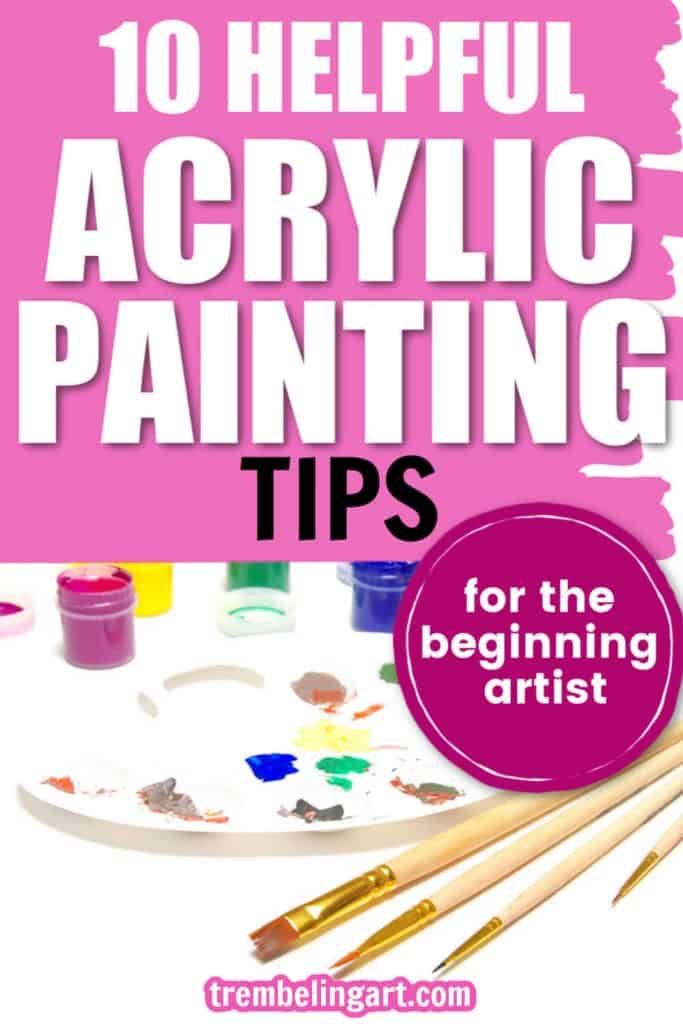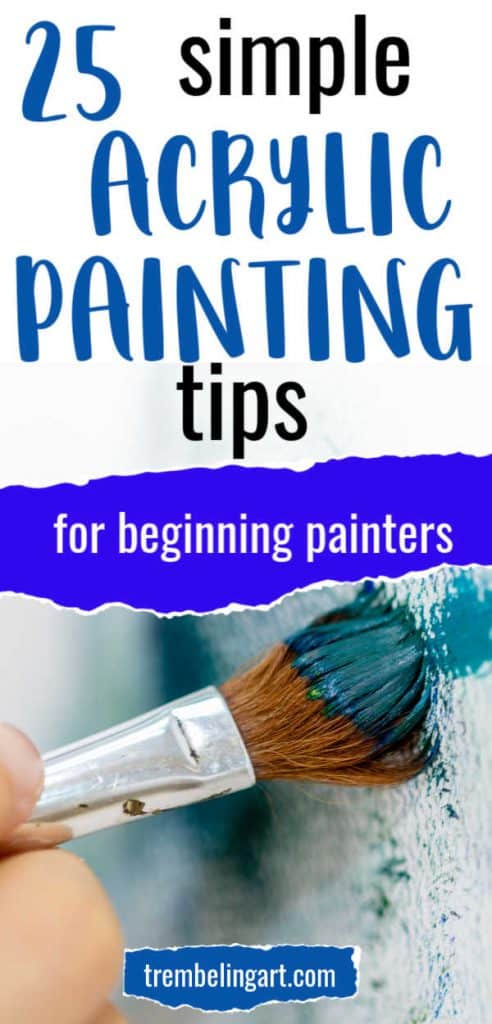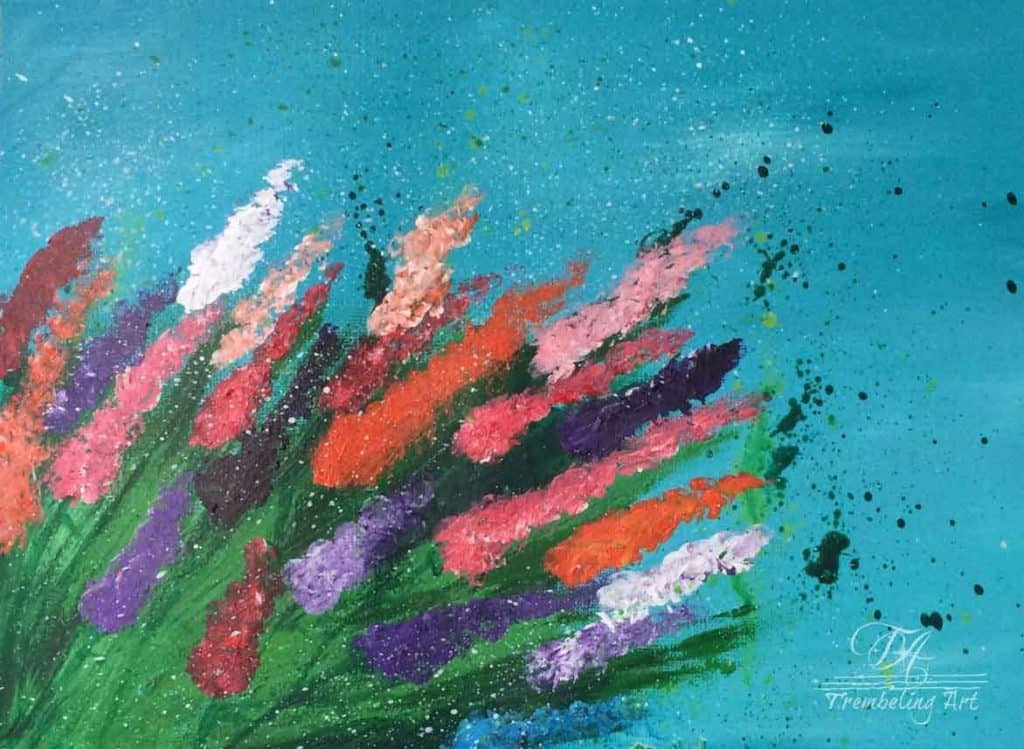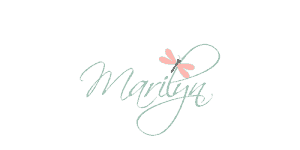tips for painting with acrylic


Ready to try acrylic painting but not sure where to start? Or maybe you have already started painting but just need a few pointers.
Acrylics are great for beginners. They are fairly easy to use, dry quickly and are cheaper to buy than oils or watercolours. A few simple acrylic painting tips will help you get started and enjoy the process of creating.
**This page may contain affiliate links to products I have used or recommend. If you purchase something from this page, I may receive a small percentage of the sale at no extra cost to you. For more information click here.**
Acrylic Paint
1. Use professional grade paint , not craft paint, if you can afford it. There are many brands available at various prices.
Professional grade paint has more pigment and will make it easier for you to blend and give better coverage. Most major brands also have decentstudent grade paints that work well for beginners.

2. Acrylic paint dries fast . This can be great if you don't want to wait days for a layer to dry, which you would have to do with oil paint, but it can be a little frustrating when you want to blend.
It's best to work quickly with acrylics or use anextender designed to slow the drying time.
If you are really impatient, you can use a hair dryer on the low setting to speed up drying time.
3. Learn how to mix colors. Learning to mix your own colors and shades will save you money and expand your palette. You can learn to mix any color from the three primary colors, red, blue and yellow.
I have a post oncolor theory you can read to get an idea about color mixing.

4. Acrylic paint generally dries a little darker. The cheaper the paint, the darker it will dry because the paint contains less pigment and more filler.
5. Buy basic colors to begin with. Red, blue, yellow, black, white and an earthy tone like burnt umber are good to start with. You can mix other colors as you need to.
Eventually you will figure out which colors you use most and you can buy those. There are often starter sets available in student grade paint such as this one fromLiquitex, which is a good place to start.
6. If you are using the cheaper craft type paints ( because of cost or availability) you can try adding a tiny bit of white to make them more opaque. Cheaper paints have less pigment and are therefore more transparent.
White will lighten the paint so you might consider using a slightly darker paint or paint multiple layers to get the tone you want.

Brushes

7. Clean your brushes with mild soap and water after each painting session. Dried paint is almost impossible to get out of brushes.
Lay your brushes flat to dry to prevent water from getting into the ferrule and loosening the glue. Water will also cause the wood to swell and the lacquer to peel on the handle.
Never leave your brushes sitting in water for long periods of time for this reason.
For more information about cleaning your brushes see my post on The Best Way to Clean Brushes.
8. Store your brushes with the bristles facing up. The bristles can become splayed and bent if they are stored bristle down in a jar. Make sure they are clean and dry and then store them bristles up in a jar or other container.
9.Synthetic brushes are best for acrylic painting. You need a brush that isn't stiff nor too soft.

The brushes don't need to be expensive, but avoid the cheap dollar store brushes because they frequently shed hair into your paint and the bristles separate after a few uses.
10. Just a few brushes are all you need to begin with. Filbert brushes (flat with an oval top) in a few different sizes are good to start with.
Also, a larger flat wash brush and a fine detail brush are good to have. You can often buy these insets that are fairly inexpensive but still good for beginners.
You can add to your collection over time and will develop your own preference in brushes.
11. Use a palette knife for mixing paint. These are also inexpensive and easy to use for mixing and painting. ( See my post onHow to Use a Palette Knife).
If you don't have a palette knife you can use a plastic knife or even an old credit card or a craft stick.

More Painting Tips
12. Don't compare yourself to others. Your art and your art journey are unique to you. It is unfair to yourself to compare your artwork to someone who has been painting for years.
Don't compare your beginning to someone else's middle.

13. Sign and date your artwork ….even your first attempts at painting. Signing your painting gives you a sense of ownership and makes you feel like the artist you are.
Dating each piece gives you a reference point so you can look back and see how far your skills have grown over the years.
14. Take pictures of your artwork. Pictures provide a visual record for yourself and can be used for social media posts, online portfolios and web pages.
15. Make notes as you paint for future reference. Jot down how you mixed colors, what composition you liked, where you got your reference photo or something you learned or observed while you painted. You can refer back to these notes in future painting sessions.

16. If you make mistakesand want to paint over them, you can usually cover most paintings with a coat or two of gesso. (See my post onHow To Gesso A Canvas). Give the gesso a light sanding and you can start over again.
17. Keep practicing. Learning to paint is a long process and the more you paint the better you get. Try to paint something every day, even if it is only blocks of color or random shapes.
The more you practice the more comfortable you will become with the brush and paint.
18. Step back from your painting frequently.You get a better perspective from a couple of feet away. You can better see the overall composition and how well the colors are working together from a distance.

19. Keep a spray bottle of water handyto mist your paints and keep them from drying out. You can also mist your painting surface to keep your paints wetter for blending. Try to find a bottle with a fine mist sprayer to avoid large water drops.
I use an empty body spray bottle that has been thoroughly cleaned.
20. Take time to practice blending. Since acrylics dry so fast it is a little bit of a learning curve to get the blending down.
Wet into wet blending requires some planning to get the paint colors down quickly and blend them before they dry.
21. You can paint on just about anything. Canvas is the usual surface for an artist but wood, paper or anything paint will stick too can be used to paint on.
My first painting was done on an old ceiling tile. For more ideas for surfaces to paint on, read my post onunique painting surfaces.
22. Work large areas first and then the smaller details.This method will save on paint since acrylics dry so fast and it is easier to add fine detail on top of the larger background area.
You can also use a thin wash of paint (paint mixed with water) to cover up the white of the canvas before you start the actual painting.
23. Keep two jars of water handy.One for cleaning brushes and one for clean water to dilute your paint. Any jar will do, such as a large mason jar.
You can buy brush basins for cleaning brushes but they are an unnecessary expense.

24. Purchase a color wheel to help you mix colors and guide you in deciding which colors you should use in your painting.
25. Don't be afraid to ask questions.Most paint manufacturers are happy to help if you email them your question.
They also usually have many valuable resources such as fact sheets and how to videos on their sites. Below are links to a few.
Liquitex
Winsor and Newton
Golden
I hope you found some of these tips useful in your painting. If you have any questions I would love to hear from you.
We also have a private Facebook group,Trembeling Art Creative Corner, where you can post your work, ask questions and interact with artists of all levels. Everyone interested in art is welcome. 😊
Thanks for reading,

tips for painting with acrylic
Source: https://trembelingart.com/25-simple-acrylic-painting-tips-beginners/
Posted by: jaramilloicia1942.blogspot.com

0 Response to "tips for painting with acrylic"
Post a Comment